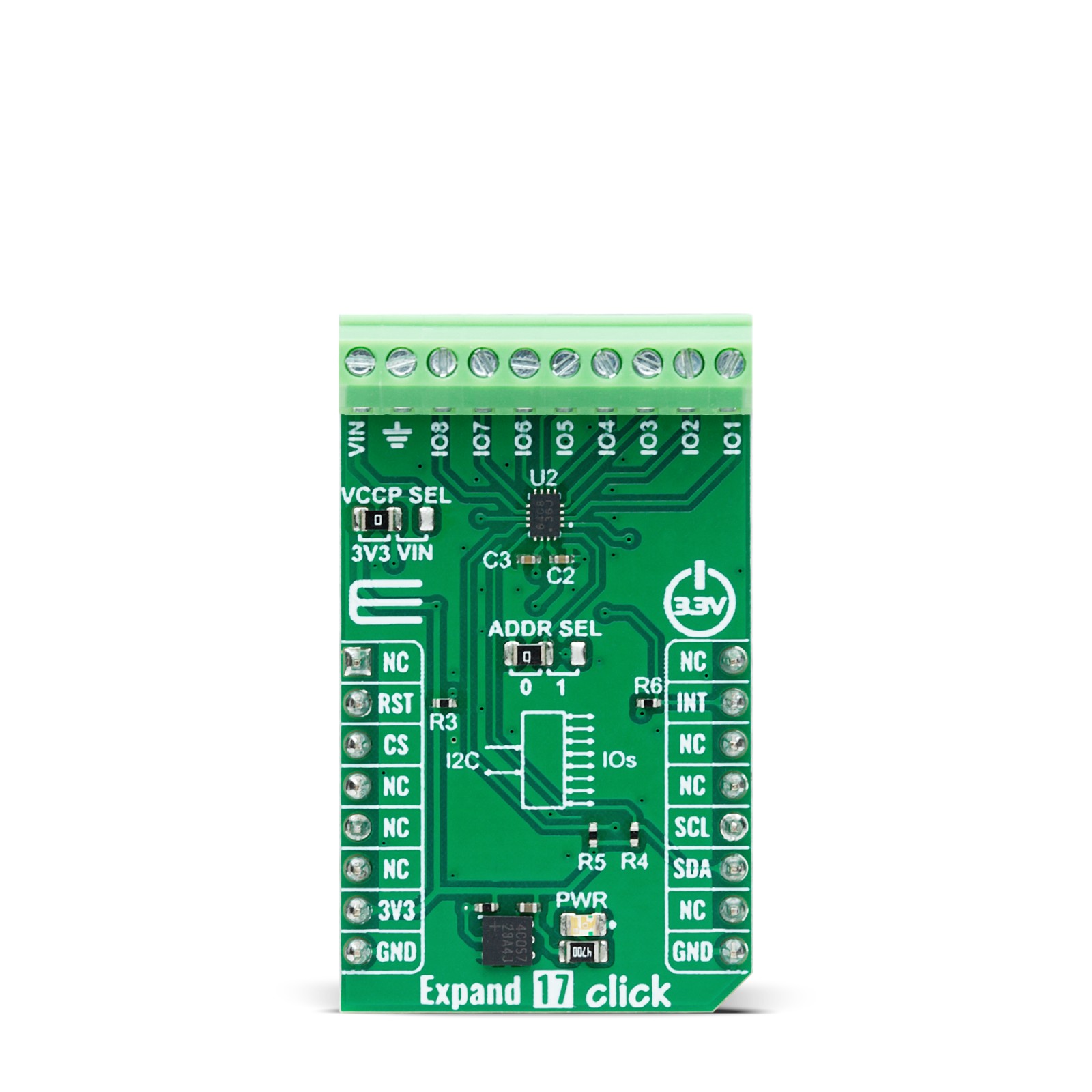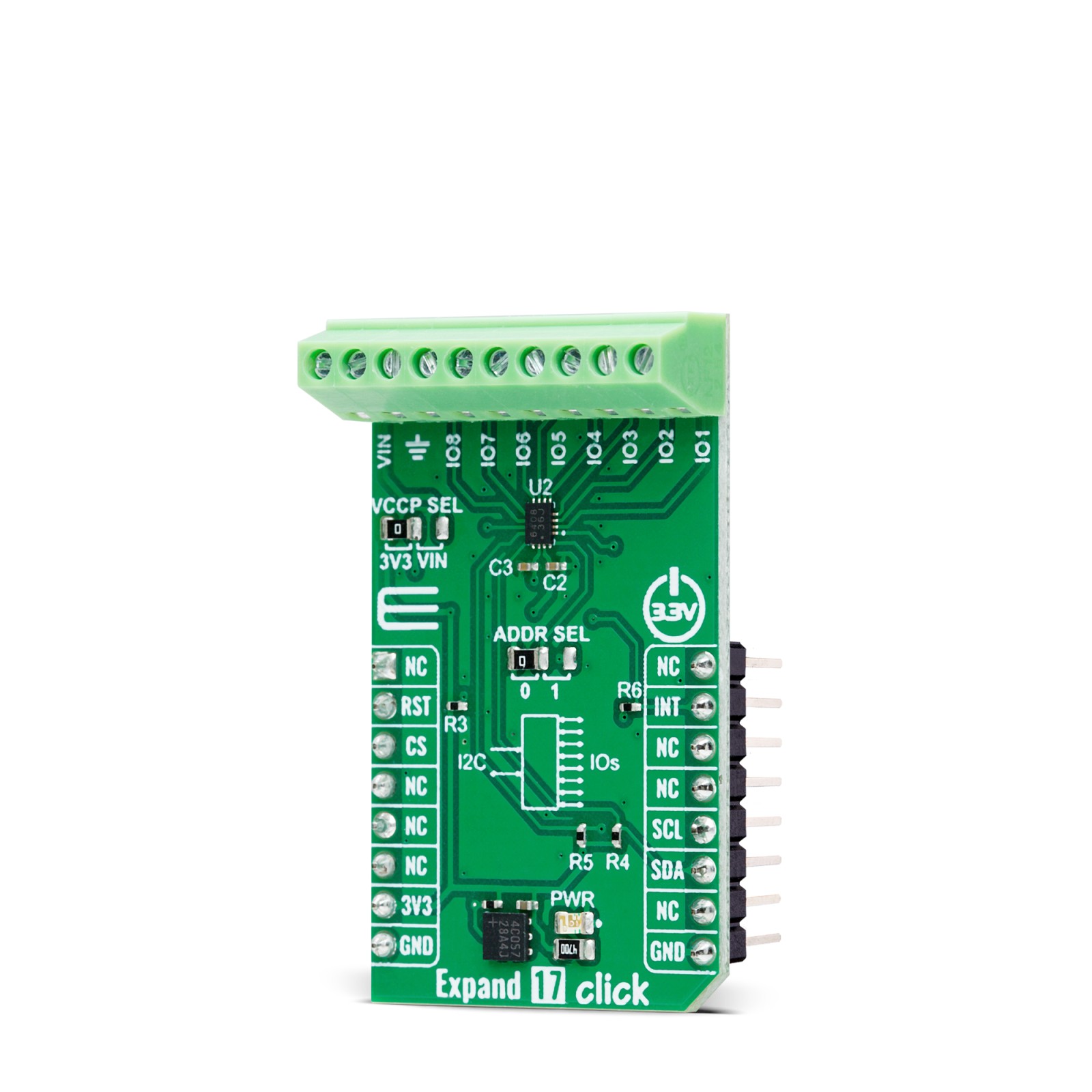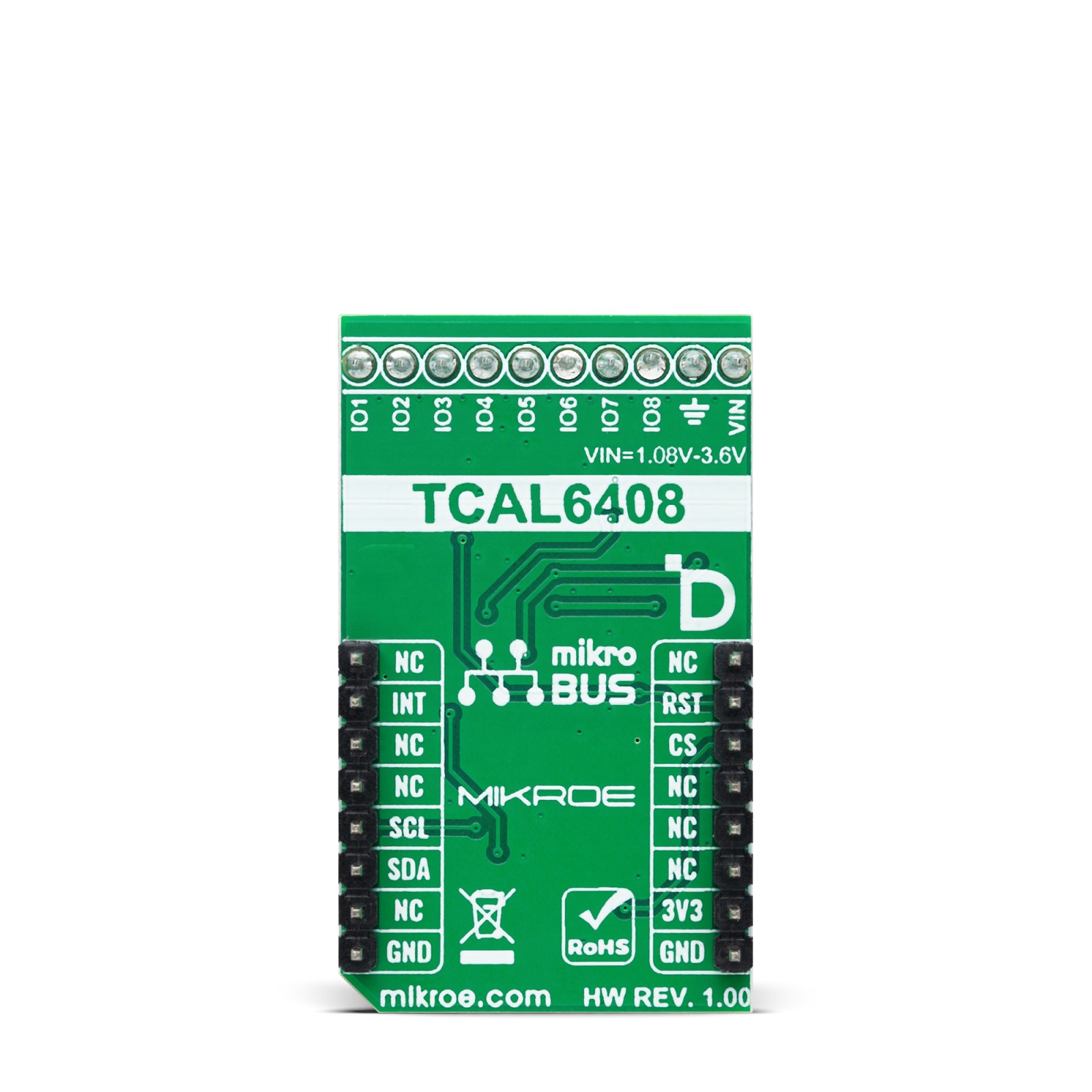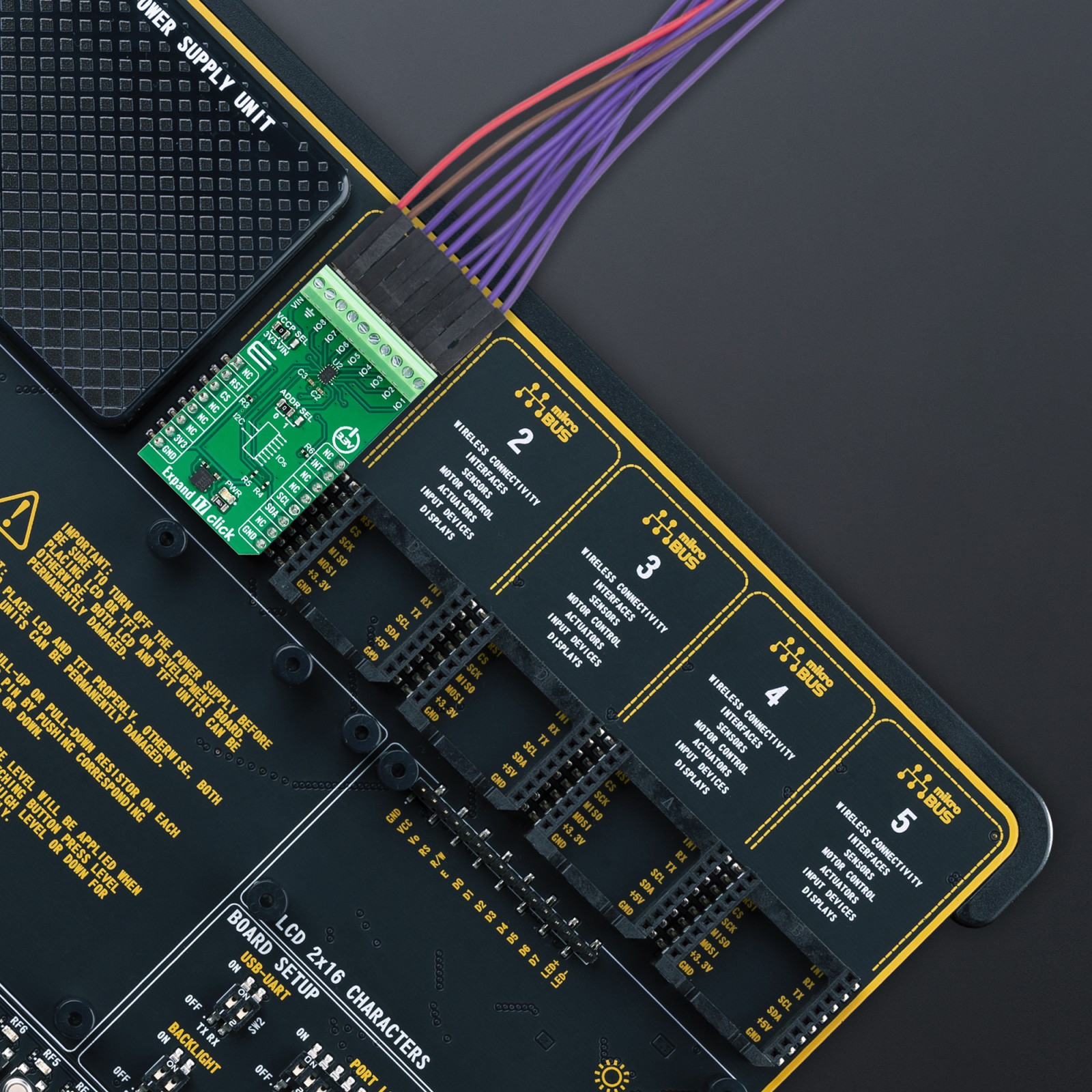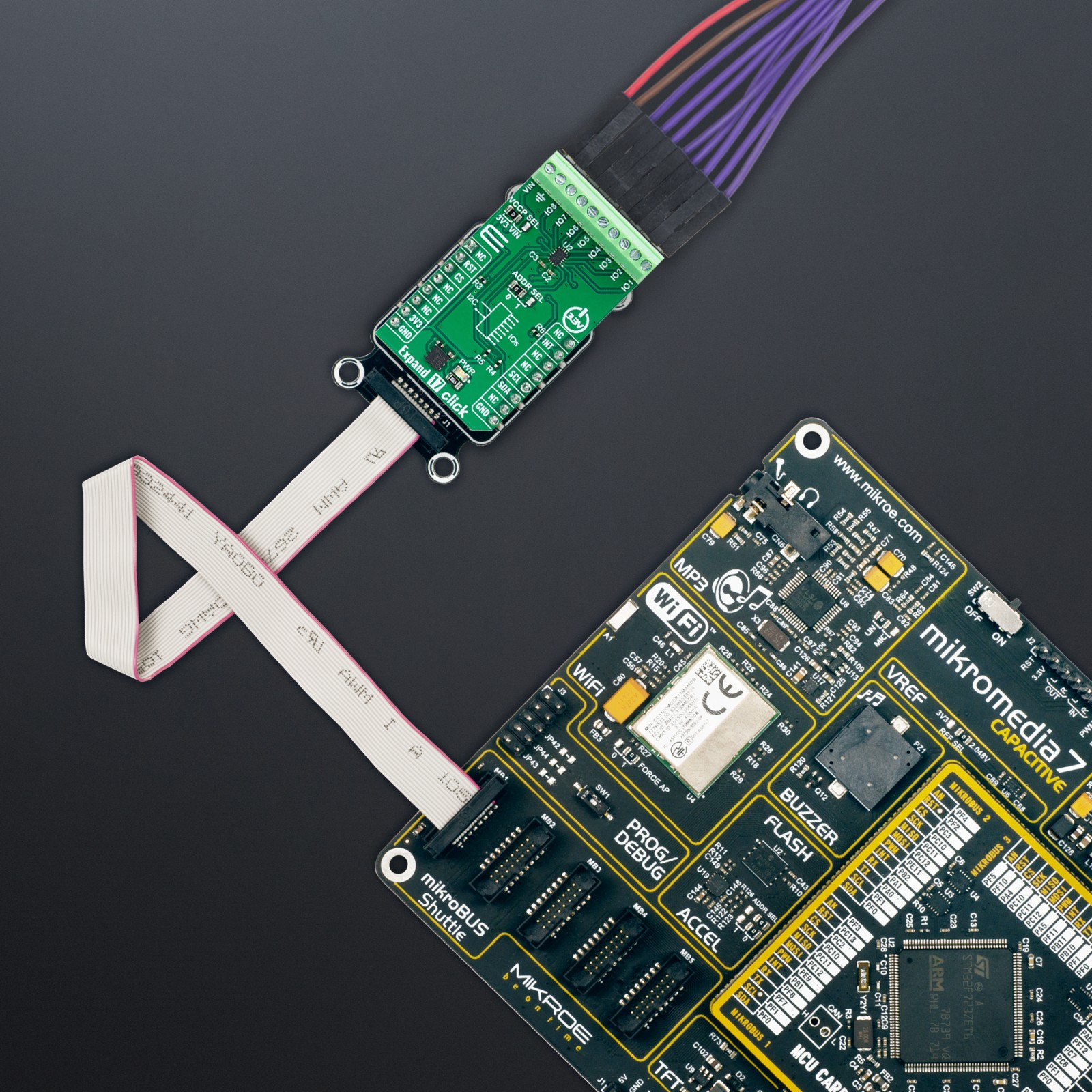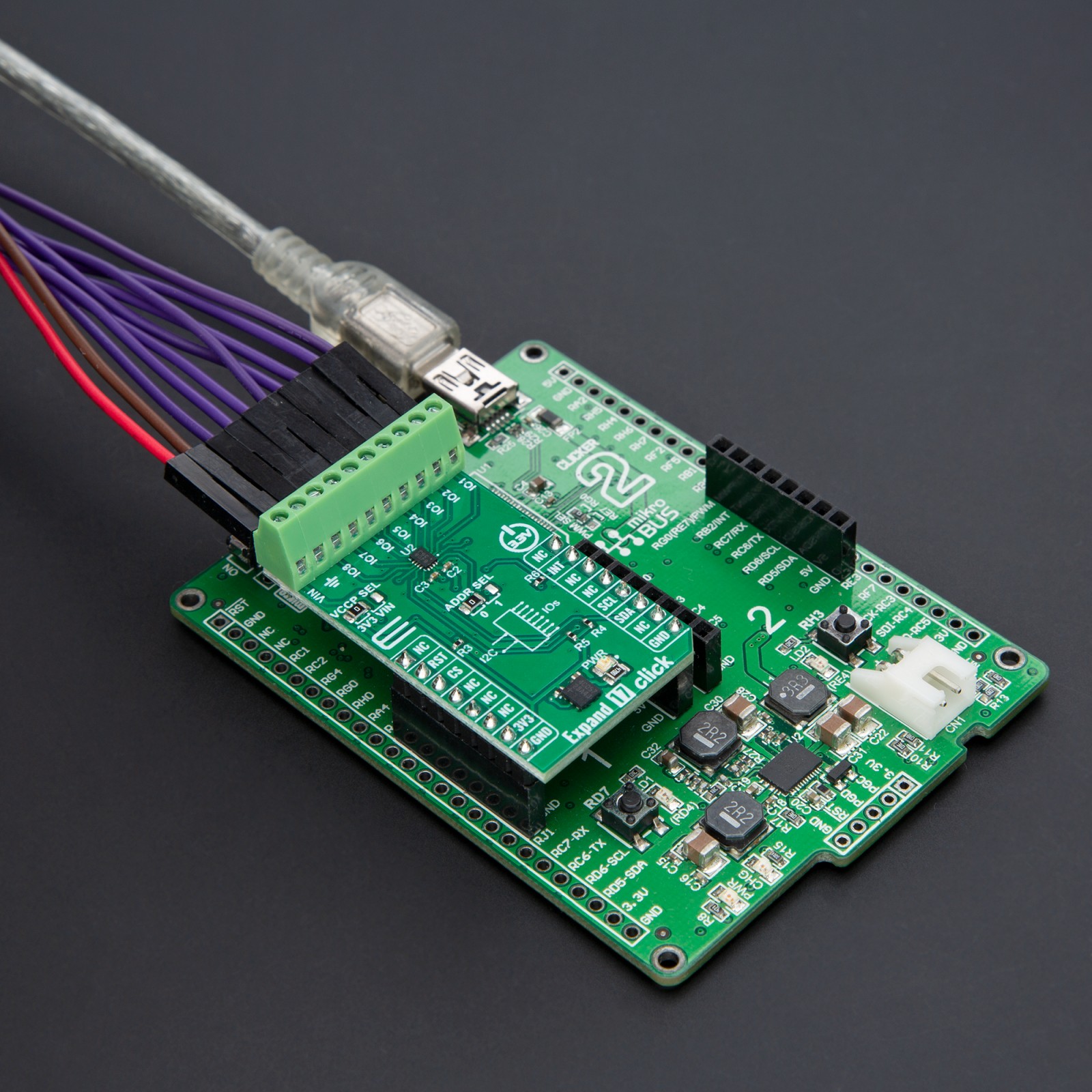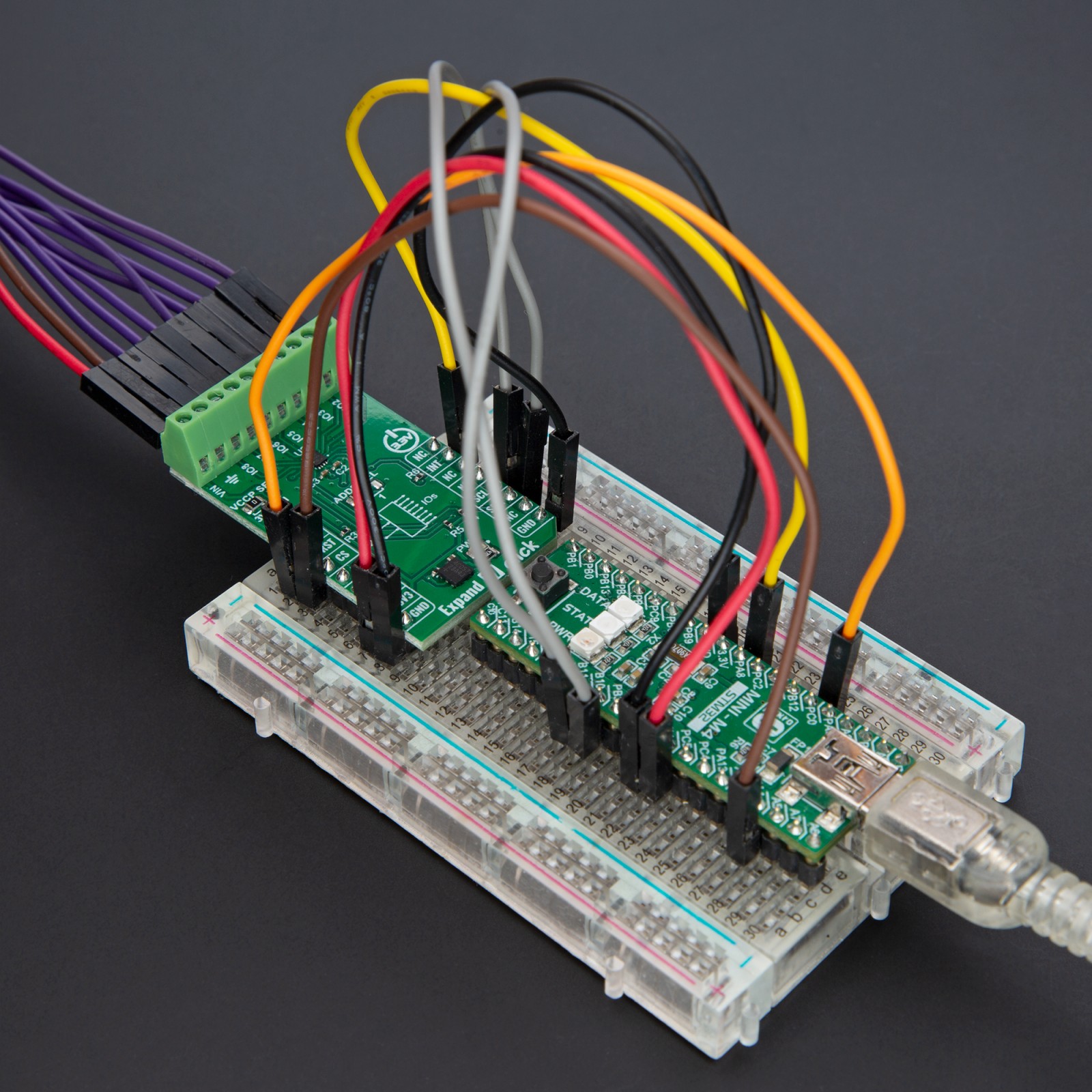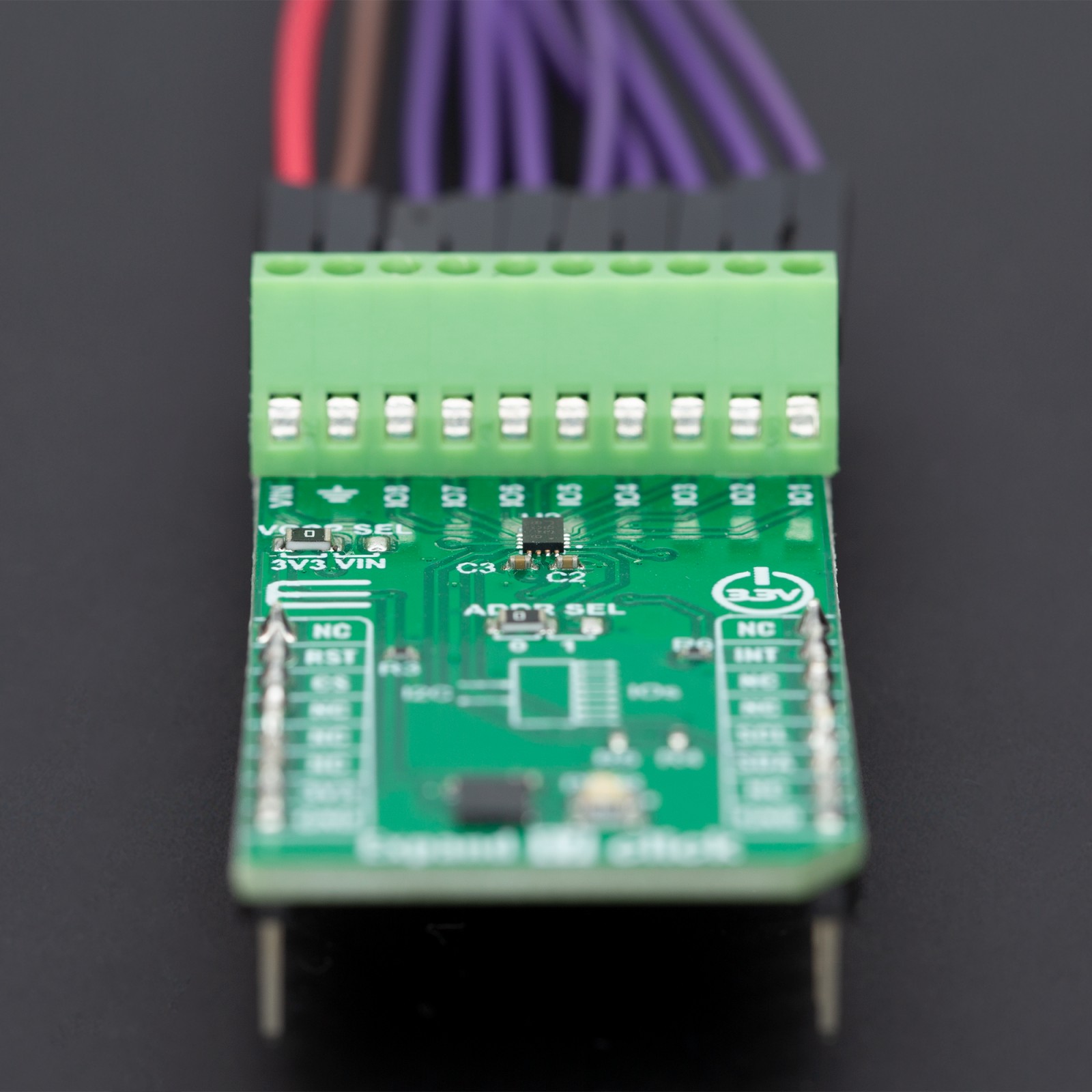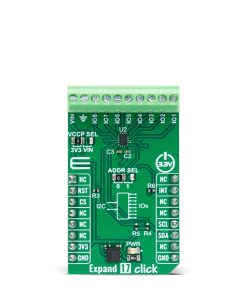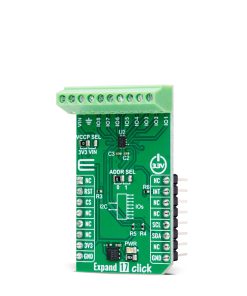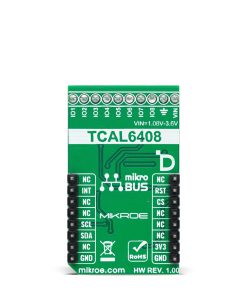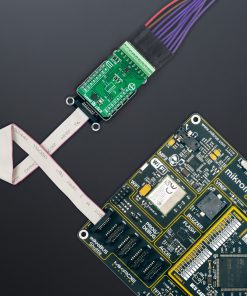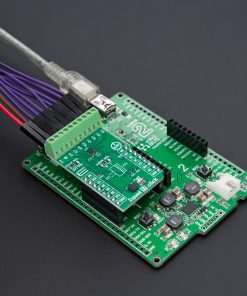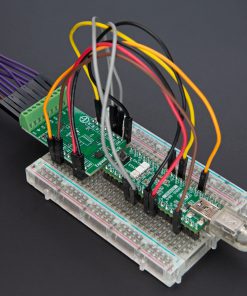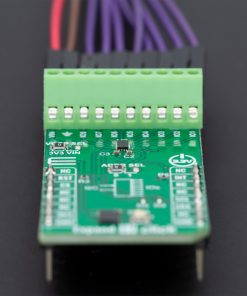Expand 17 Click
R275.00 ex. VAT
Expand 17 Click is a compact add-on board designed to expand the number of input/output pins in your system. This board features the TCAL6408, an 8-bit I/O expander from Texas Instruments, which communicates via the I2C protocol. The TCAL6408 features programmable output drive strength, latchable inputs, pull-up/pull-down resistors, and configurable open-drain or push-pull outputs, offering flexible and enhanced I/O performance with minimal power consumption and reduced EMI. Additionally, it supports independent logic and main power supplies, with the ability to select the main power source through a jumper. Expand 17 Click is ideal for applications requiring additional I/Os, such as controlling switches, sensors, push-buttons, and LEDs.
Expand 17 Click is fully compatible with the mikroBUS™ socket and can be used on any host system supporting the mikroBUS™ standard. It comes with the mikroSDK open-source libraries, offering unparalleled flexibility for evaluation and customization. What sets this Click board™ apart is the groundbreaking ClickID feature, enabling your host system to seamlessly and automatically detect and identify this add-on board.
Stock: Lead-time applicable.
| 5+ | R261.25 |
| 10+ | R247.50 |
| 15+ | R233.75 |
| 20+ | R224.95 |

